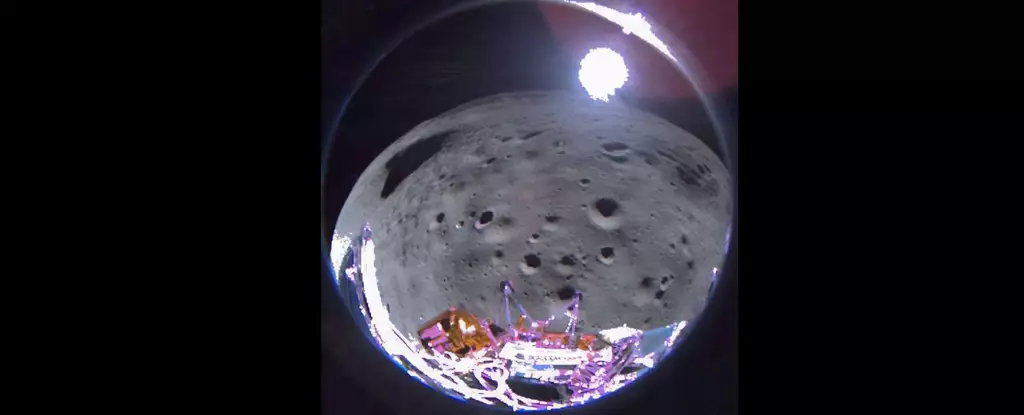Intuitive Machines’ Odysseus lander experienced an off-kilter touchdown on the Moon, which resulted in the spacecraft lying in an awkward angle that limited the data its antennas could transmit. Despite this, the mission team has been able to maintain communication with the lander using flight controllers. The snapshots released by the team showcase the challenges faced by the lander during its descent. The images taken confirm that while the lander may be in an uncomfortable position, it is still operational.
NASA’s Lunar Reconnaissance Orbiter played a crucial role in identifying Odysseus’ landing spot, which was within a mile of its intended target near a crater called Malapert A in the Moon’s south polar region. This close proximity to the initial landing site is commendable, considering the hurdles faced during the descent. The mission team has been able to assess the precision of the landing through the images captured by the orbiter, providing valuable insights into the success of the mission.
The difficulties faced by the Odysseus lander were not limited to its touchdown but extended to technical malfunctions that needed immediate attention. Hours before the landing, the Nova Control team had to reprogram the lander to work around a disabled laser range-finding system. The spacecraft successfully utilized an experimental laser range-finding system provided by one of the NASA payloads to overcome this hurdle. Additionally, the lander hit the lunar surface faster than anticipated, causing a lateral motion that affected one of its landing legs and resulted in the spacecraft lying on its side.
Impact on Data Collection
While the positioning of the lander may not significantly impact data collection, it has had implications on data transmission. The team behind the mission revealed that they were able to communicate with Odysseus until a certain timeframe, after which the solar-powered lander may have to go dark sooner than expected. The reduced exposure of the lander’s solar panels to light may impact its operational capabilities. Despite the challenges, the mission managers are determined to continue collecting data until the last possible moment.
Intuitive Machines expressed optimism about the success of the mission, highlighting Odysseus’ remarkable landing precision and the efforts to ensure operational efficiency. However, the team acknowledged the potential limitations in maintaining communication with the lander due to the reduced exposure of its solar panels to light. The mission managers are preparing to maximize data collection efforts until the lander’s batteries are depleted, contemplating various scenarios for the future of the spacecraft.
Hope for Resilience
As Odysseus faces the possibility of going dark sooner than expected, there remains a glimmer of hope for a possible revival. Similar to the unexpected revival experienced by Japan’s SLIM spacecraft, Odysseus and its controllers may encounter unforeseen opportunities for extending the mission duration. The resilience and adaptability demonstrated by the mission team during the challenges faced by the lander serve as a testament to their dedication towards achieving the objectives of the mission.


Leave a Reply